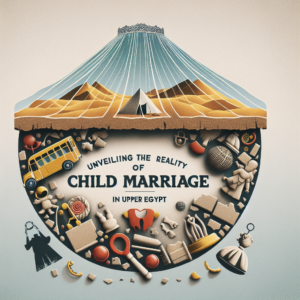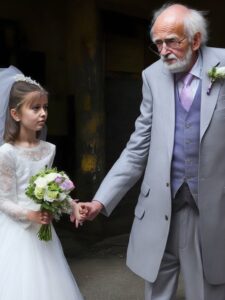The Harsh Reality of Child Marriage: Breaking the Cycle
Introduction:
Child marriage is a deeply ingrained cultural practice that continues to affect millions of children around the world. It is a violation of human rights and a major barrier to social and economic development. Despite efforts to curb child marriage, the practice persists due to a variety of factors including poverty, gender inequality, and cultural norms. In this article, we will explore the harsh reality of child marriage and discuss ways to break the cycle.
1. Understanding Child Marriage:
Child marriage refers to any formal or informal union where one or both parties are under the age of 18. It predominantly affects girls, with an estimated 12 million girls married before the age of 18 each year. This translates to one girl being forced into marriage every three seconds. Child marriage is prevalent in various regions including Sub-Saharan Africa, South Asia, and the Middle East.
2. The Consequences of Child Marriage:
Child marriage has devastating consequences for the physical, emotional, and social well-being of children. These include:
a) Education and Economic Impact: Child marriage often disru⚡ts a girl’s education, leading to limited opportunities for employment and economic empowerment. Girls who are married early are more likely to experience poverty and economic dependence.
b) Health Risks: Early marriage exposes girls to health risks such as early pregnancies, complications during childbirth, and sexually transmitted infections. They are also more vulnerable to domestic violence and mental health issues.
c) Loss of Agency: Child brides are denied the opportunity to make decisions about their own lives. They are often subjected to domestic servitude, denied access to healthcare, and lack control over their reproductive health.
3. Drivers of Child Marriage:
Child marriage is fueled by multiple factors, including:
a) Gender Inequality: In societies where gender roles are rigidly defined, girls are often seen as economic burdens and marriage is seen as a way to secure their futures.
b) Poverty: Families living in poverty often see child marriage as a means to reduce the financial strain of raising a daughter. Dowry practices, where the bride’s family pays a sum of money or property to the groom’s family, reinforce this cycle.
c) Tradition and Cultural Norms: Deep-rooted traditions and cultural practices can contribute to the perpetuation of child marriage. In some cases, child marriage is seen as a way to preserve family honor or prevent premarital sex.
4. Breaking the Cycle of Child Marriage:
To break the cycle of child marriage, a multi-faceted approach is needed, involving governments, communities, and individuals. Some strategies include:
a) Legislation and Enforcement: Governments need to enforce laws that establish a minimum age of marriage and provide penalties for those involved in child marriages.
b) Education and Awareness: Educating communities about the negative consequences of child marriage can help change attitudes and beliefs. This includes promoting girls’ education and empowering them to make choices about their own lives.
c) Economic Empowerment: By creating economic opportunities for women and girls, families may be less likely to see child marriage as the only viable option for their daughters.
d) Support and Protection: Providing support services, such as healthcare, counseling, and legal aid, to child brides can help them escape abusive situations and rebuild their lives.
e) Social Norm Change: Engaging with community leaders, religious leaders, and influencers to challenge harmful social norms and traditional practices is crucial in eradicating child marriage.
FAQs:
Q1. Is child marriage legal?
A1. Child marriage is illegal in many countries, but enforcement of these laws is often weak. Laws alone are not enough to end child marriage; a comprehensive approach involving education, awareness, and economic empowerment is required.
Q2. What are the long-term effects of child marriage?
A2. The long-term effects of child marriage can include limited educational and economic opportunities, poor health outcomes, and perpetuation of poverty cycles.
Q3. How does child marriage contribute to gender inequality?
A3. Child marriage reinforces gender inequality by limiting girls’ agency, education, and economic opportunities. It perpetuates the belief that girls are economic burdens and reinforces harmful gender roles.
Q4. What can individuals do to help end child marriage?
A4. Individuals can support organizations working to end child marriage, advocate for policies that protect children’s rights, and raise awareness about the issue within their communities.
Conclusion:
Child marriage is a complex issue with severe consequences for the lives of millions of children. Breaking the cycle of child marriage requires a multi-dimensional approach that tackles poverty, gender inequality, and cultural norms. By working together, we can ensure that every child has the opportunity to thrive and fulfill their potential.




















